Life, Death, & The Sefirot: FFVII’s History & Remake’s Future in a New Symbol of Reunion
by X-SOLDIER June 29, 2020 0 commentsRemake‘s Reunion & Making Promised Land(s)
The Reunion At Hand: Meta Context & Metaphors
Even from the very first trailer announcing the project, Remake has used these two opposed concepts of Aerith’s floral reuniting tied to a Promised Land of personal salvation & the Will of the Planet along an existing, pitted against Sephiroth’s black-winged alien Reunion tied to a literal Promised Land of a new reality & possibilities laying within a reflection of the original & and endless sky. This meta context & metaphor of what’s in store as a core part of remaking Final Fantasy VII was laid out in the moment that brought so many of us to tears 5 years ago, and carries just as much, if not even more significance to the team involved in bringing about this Remake of that world.
The first part of the voiceover talks about the original game, and everyone’s memories of it. This is speaking from the perspective where the concept of The Promised Land is metaphorical. It is about remembering those people who are dear to you, even after they’re no longer around – so long as they live on in your heart & memories.
Long ago, we looked upon a foreboding sky.
The memory of the star that threatened all, burns eternal in our hearts.
In its wake, came an age of silence.
Yet with each fond remembrance, we knew – those encountered… were not forgotten.
– That some day, we would see them again.
The second part of the voiceover is announcing Remake, where it’s hitting on the theme of The Promised Land as an actual location that we can go – a game can we can play, where we can literally have another chance relive those things, but it is about embracing that things will also be different, because this is no longer a place of our treasured memories. It is a brand new reality, where the people who we cared for are literally coming back to us as they were back then.
Perhaps it was no more than wishful thinking…
…but after the long calm, there are now the beginnings of a stir.
The Reunion at hand; it may bring joy, it may bring fear – but let us embrace whatever it brings.
For they are coming back.
At last, the Promise has been made.
The original ending of Final Fantasy VII is ambiguous between these two concepts. The very last thing that we see during the climax is Aerith’s face – but you don’t know if that’s just something you get to see by playing the game again, remembering that moment, or if that final moment is a glimpse at a different time & place altogether.
Now in Remake, there is a possibility of seeing both of those things fully realized – and it has brought joy & fear for fans of the original as expected – and they’re the same joys & fears that the developers are facing with the creation of Remake itself. Remaking Final Fantasy VII is giving players the same sort of literal reunion with beloved companions in a Promised Land, which directly mirrors the experience that Cloud longed for. This is why it’s natural that in Remake, they’re going to explore that theme directly as it applies to the fans’ memories of the game – especially as fans themselves. We also know that the team putting in huge efforts crafting multiple layers of symbolism connected to this underlying conceptual theme throughout the game is delicately crafted & deeply intentional so that it rigidly adheres to the core structural framework of the emotional & existential components of the original game.
If we look back at the announcement, exactly between the literal & metaphorical sections of the trailer & voiceover, we are presented with the following scene:
Remake‘s Two Forms of Reunion – The Flowers & The Feather
The Flowers: Emotional Salvation & “再会” Reuniting
“– That some day, we would see them again.”
After panning up an alleyway that looks like it’s the one Aerith is in when we first see her, it cuts down to the pavement. There, lying on the ground we just see a flower – like the ones that Aerith sells. There are two blooms that share a stem. One of them is in the exact center of the frame, which has withered and died, while the other to the right of the frame is still healthy and lit brightly in a neutral white light. One bloom is giving its life so that the other can live – an intertwined giver & receiver on a flower that Remake has told us symbolically represents lost lovers being reunited, or “再会” as it’s used in Remake.
Another healthy flower with a single bloom sits in the shadows apart from the wilted one, where it faces the path leading to the left – showing a familiar green glow of Lifestream. This is Cloud in the heart of the Planet, embracing the natural reunion that is offered in the natural cycle of life & death. This single bloom left alone & surviving just to eventually return to the planet, facing openly towards that path leading to the Planet’s metaphorical Promised Land.
The Feather: Physical Salvation & “リユニオン” Reunion
“Perhaps it was no more than wishful thinking…”
But then… to the right, just beside our neutrally lit full bloom that’s still holding on to its withered counterpart, there is a puddle of water bathed in an artificial red light. Visible in the puddle’s reflection is the expanse of a dark, open sky in a world above that we can’t see directly – showing only a statue of a one-winged angel. From this unseen world above, a Sephiroth’s single black feather falls, alighting on the water’s surface – its ripples distorting the image that was there before, changing it. The feather and its shadow taking over the space that once held the angel’s single wing. This is Sephiroth’s offer, the classic Final Fantasy VII “リユニオン” Reunion. Now it’s a world that’s a reflection, where he’s made one little change. Another version of this alleyway, and the path where our dual bloom is facing. A different kind of Reunion offered only by a one-winged angelic figure who appears to be submerged in a crater in the ground – but truly exists somewhere else entirely.
It’s that single black feather that Cloud holds at the end of Remake, left behind by this Unknown Sephiroth at the Edge of Creation. He sets out in pursuit of that one-winged angel, facing a different path, with the fate of his intertwined companion caught in the center. Walking towards into rain towards the literal Reunion in the reflection of the moment, the offer shown in the water that represents the element of the path of what he lost – Zack, and also the lake where Aerith is buried. Sephiroth’s literal Promised Land.
This is why there’s a new Sefirot-based Reunion symbol painted onto the back of the Sephiroth copy’s black cloaks, in order to represent the new choice for a Reunion that this superconsciously aware Unknown Sephiroth is offering. It is a map that shows us how & why this change obeys the rules that Final Fantasy VII is built on – even by choosing to defy destiny itself, there are still rules to how that can be done and they’re all being followed.
The Dichotomy of Recreation Inherent to Remake
The first shot of the original game is of a vast empty nothingness in space. Just panning and showing stars & all of reality, before slowly transitioning into Aerith’s face bathed in a green glow, as the empty sound changes to the famous first three notes of the theme. Then in the original games ending, we see the Lifestream coming together with Holy & Meteor, and revealing the Light of Creation – showing us Aerith’s face again. In 2005, Advent Children showed us a version of this future, where Cloud’s emotional redemption finally delivered that personal Promised Land that he talked about in the game’s ending. In Remake, we don’t open with the empty voice of outer space, but we do arrive at that same shot of Aerith with those now famous three musical notes, but this time, there’s something else there. As players, we know how the story of Final Fantasy VII has to go. Many of us even know where the Compilation has taken it. The conclusion in Advent Children, demonstrates that Sephiroth’s state of superconscious awareness of the Sefirot & creation itself means that so does some version of himself – the one that Cloud usually just dispatches automatically, and the last moment where the question about what path Cloud wants to take is his and his alone.
Knowing things that are going to happen provides a layer of disconnection from them, which is why Remake is tackling that head-on. The Unknown Sephiroth is the mechanism by which the team is making the struggles that Cloud experiences match the struggles and experiences that the players are having, and why the references and flashbacks to things from Advent Children are frequently used in Remake to help clearly reinforce those themes from a story-specific standpoint. Whether you’re enthralled by the concept of being offered an alternate reality where Zack survives, or if you’re completely offput by the very idea that it would ever be a possibility – you’re right.
Wishing for the Power to Change Tragedy While Accepting It
Those are the incredibly powerful emotional reactions that this offer is supposed to elicit. You’re meant to wrestle with it. I loved Remake, I loved every moment in the game spending time with the characters again and defying destiny – but initially I loathed the ending at first for a number of reasons. It’s why I sat with it and looked extremely closely at every single part of it that had initially bothered me. I wanted to know why I felt what I did, and really truly understand what was there, and make sure that I kept the memories of it and emotions toward it that it deserved.
Now the game’s ending is something that I unquestionably love, because of how it made me face my most extreme emotions in order to understand them – resulting in these overly long types of articles, and a clarity into parts of the story that I would never have gotten into without those choices being carefully crafted by the writers and the development team. This is the whole reason that since its inception & announcement in 2015, they intentionally decided to explore that, because at an emotional level, this is what allows them to even be able to revisit the original Final Fantasy VII‘s story without fundamentally violating the underlying framework’s rules & losing the message about emotional attachments and life & death that the original examined. It’s why Aerith is frightened out of the alleyway, and why she delicately scoops up & cradles the flower that gets stepped on as a result – that’s the core theme. It’s treasuring the reunion you’re given even when it’s broken – but also still deeply wanting to go back and do everything in your power to go back, make it more perfect & complete than it ever was before.
Personal Perspective: Remaking Important Emotions & Finding a Promised Land
Personally, this emotional exercise is something that I’ve had to do a lot of lately because a close friend of mine – who was extremely eagerly awaiting the release of Remake with me – passed away unexpectedly in early 2019. I didn’t ever get the opportunity to share any of the amazing moments in Remake with her that we excitedly talked & speculated about for years – but I still find myself wanting to all the time. I have to deal with unexpectedly getting hit with overwhelming moments of sadness when I’m enjoying these things I love, just because they also remind me of her. I’ve had to learn to visualize how excited she would have been about those things with me if she were still there. That struggle is fueled by knowing that she wouldn’t want the emotions of sadness & pain from the nostalgic longing that comes with the loss of someone you love to distort the experience of something that we both were deeply passionate about. It’s why the struggle Cloud goes through in Advent Children makes more sense than it ever has for me – but especially in regards to the way that Remake‘s been preemptively crafting its formative moments around characters we have lost & are destined to lose in order to echo the things Cloud will have to experience again later. Those have all stood out like shining beacons to me.
It’s why the opportunity to fight against Destiny & hope that maybe this time you can change things for the better with Avalanche in Chapter 12 worked so well, but the conceptual abstraction of the ending didn’t connect with me the first time I beat the game. I felt that the new meta elements overshadowed the central story and detracted from it as a whole. Upon beating it a second time, I felt confident & excited at the possibilities of where it was going – but everything still seemed very abstractly removed from what defined Final Fantasy VII – but I was content with not knowing until later in that Unknown Journey. There were enough interesting elements to intrigue me, and keep the spark burning with all of the same interests that brought me into pouring my attention and thoughts into these things like they had with the early news of Advent Children way back in late 2003, so I started poking at a whole host of different topics again, eventually deciding to take a break from the in-world speculation, and focus on a couple pieces about Remake that allowed me to look at it with the writing & development team’s struggles and inner motivations in mind.
Then, as I was examining the Sefirot’s religious themes and this new abstract symbol connected to Reunion and the underlying themes of Final Fantasy VII, I stumbled across more specifics of the push-and-pull of that exact existential struggle being set up & already asked more directly in Remake, by using an existing logical framework established in the original. While I knew that the emotional ideas could potentially be explored during the time of Advent Children, as soon as I stumbled on the parallels to a duality in Sephiroth matching the way David Bowie portrayed & experienced the ideas of this struggle – when the thing you’re losing is yourself, that connection clicked. When it’s looked at as a personal issue that you’re unable to escape on your own, but trying to gain the power to do so, I saw an overwhelming amount of connections specific to Sephiroth’s new and seemingly uncharacteristically kind behaviour in the end of Remake, which let me use him as a basis for examining those themes, and suddenly I had a ton of other structure to work from.
This theme of a dangerous but partially pitiable villain shown with Sephiroth’s 俺 (ore) & 私 (watashi) “selves” also reminded me of how Maximilian Dood had speculated the ending of the Midgar portion of Remake would be like the ending of Fellowship of the Ring with the main stakes being established & looking out into the wide open world ahead – which it very much is. The Lord of the Rings also has a central & pitiable villain in Smeagol/Golum, and Gandalf discusses both sides of the emotional struggle with Frodo. It covers themes of “pity” and when the decision to either spare or save someone is yours, how you have to handle that responsibility because you can’t yet see what could come as a result of those actions – for good or bad. The important thing is to have a clear understanding of when someone can be saved, when they can’t be saved, and when they need to step in to save you from yourself. Those are also key themes in Advent Children, since when Cloud falls into a state of emotional helplessness – it’s ultimately his confrontation with Sephiroth that saves him from himself, and Cloud chooses to keep that Sephiroth as a memory as well, despite the fact that it’s painful. So now in Remake, those tables are turned and this Unknown Sephiroth seems to be giving Cloud a way to save himself from himself… but the motivations of Sephiroth’s new 俺 (ore) and his original 私 (watashi) “selves” still follow the same path to meet those ends, and also still have the same core motivation & apocalyptic consequences.
That’s why I decided to go into full detail to test that conclusion from every possible direction that I could within the framework that seemed to be pointing out those details… and that provided all of the the wholly unexpected & overwhelmingly consistent details that I’ve covered here. The influences in media linked to spiritual references in the original game, the core concepts forming the Sefirot about life & existence, the rules of the spiritual & alien biological systems within the game’s world, the way that superconsciousness & scenes between characters play out, the specific new symbolic visual metaphors of reuniting vs. Reunion connecting into messaging about the task of creating Remake as a game connected to the concept of creating a new world itself. All of those things are still directly aligned to seamlessly match with everything that existed as a logical framework to guide & shape the original story in Final Fantasy VII, which finally brought me all the way back to looking at the original writing team. Revisiting that last part is what finalized a clear understanding of why this was such a crazy journey that kept giving what seemed like impossibly clear answers the deeper I dug at the metaphors, but also why it meant so much to me & felt so familiar.
From Keter to Malkhut: The Original Team, the Remake Team, & the Players
These concepts of life & death are at the heart & soul of what the story of Final Fantasy VII is – as they were the core elements that Sakaguchi established about the theme of the story: “Ever since my mother passed away, which was when we were creating Final Fantasy III, I have been thinking about the theme of ‘life.’ ‘Life’ dwells in many things, and I was curious what will happen if I attempt to analyze ‘Life’ in a mathematical and logical way. I’m an engineering major, so maybe this was my approach to overcome the mental shock in me. Although I’ve been occasionally sharing my thoughts with Mr. Uematsu, this is the first time in the Series that this particular theme is actually brought up in the game. You might have difficulty noticing it though.”
It was Kitase, Nomura, & Nojima took these ideas along with Sakaguchi’s Midgar & the Lifestream theme and eventually developed everything related to Cloud, Sephiroth, Zack, & Aerith by following Sakaguchi’s driving theme of it being, “not enough to make ‘life’ the theme, you need to depict living and dying. In any event, you need to portray death.” This stuck solidly to everything about what defined Final Fantasy VII, and Nomura’s decision to have Aerith be the one who’s killed help to make her death is one of the most memorable in the history of video games. This core examination of life & death is why there’s a solid, logical, and analyzable framework from the original that still exists in Remake – once you know it’s there. It’s why poking at that unexpectedly unleashed an absolute floodgate of information, from what I had initially expected to be nothing more than loose speculation. This is why the team felt it was important that the temptation of a brand new literal Reunion is now marked by a carefully, and intentionally crafted symbol of a Sefirot showing a future path to where the Promised Land is real and the people you loved do survive.
However, that choice comes at the potential cost of erasing literally all of the treasured memories that you hold dear. You have to choose whether you’re going to fight against that promise of a shining new future, despite knowing what that destiny means for those you care about… or you can choose to embrace it, whatever it brings. It’s a way to ensure that you get to live the moments of Final Fantasy VII‘s story the way that you as a player want to, without any regrets. The ultimate fate of a story you already know is no longer yours to control, so in playing Remake, you have to accept that there are some things that are out of your hands & things you can’t change – but you still need to try in the ways that matter to you – because those are the memories that matter. If you can accept giving up control for someone else’s needs rather than your own, now there’s actually a chance that you could literally save everyone; Zack, Aerith, Avalanche, the people in the Slums, and even Sephiroth… but you can’t know for certain that the future will work out better if you go that route. Your choice comes down to what you’re willing to give up & what you’re not – and who you trust with the futures of the characters you love.
All of those things are perfectly summarized in the lyrics of Remake‘s theme song, Hollow. This is especially noticeable because this song in particular was written by Uematsu, which is who Sakaguchi primarily talked with about his mother’s passing, so he’s carried the themes of life & death within Final Fantasy VII‘s other material before, like the Advent Children‘s track Cloud Smiles. This is why an instrumental version of that Hollow is used in Sector 5, since these are the struggles that both Cloud & Aerith are dealing with about Zack, but will also come to struggle with for each other as they continue their journey together.
It’s why the temptation and promise that you want to give in to is also supposed to make you feel scared and uncomfortable to your very core. Zack gave up his life and trusted Cloud to carry his legacy, and then Aerith was willing to give up her life so that Cloud can keep their shared memories – so Cloud is torn between accepting that gift from them & giving up all of those shared memories so that they don’t have to die…. Everyone dies eventually, but some things seem like they should be preventable if only you could do something. Power or a Normal Life? – You can’t have it both ways.
That’s why this temptation is coming from someone who we have to deeply know is deceitful, manipulative, selfish, & megalomaniacal. It’s why we have to learn that Cloud never made the cut to join SOLDIER. He never made his choice between power & a normal life… and neither did Sephiroth – they were both just Shinra’s science experiments, and thrown into an existential crisis that they need the assistance of others to overcome. When offered a path to power, is Cloud actually trying to forge a new destiny to ensure that they get to live the life that they want, or is he trying to just escape his own suffering in this world? If Sephiroth is given all the power he’s ever fought for, will he forge a real new shining future that’s worth believing in, or will he just discard this entire reality where he fails to escape his ultimate fate no matter how bleak that alternate future is for everyone else?
That’s what the gift of a Remake is & why it’s what we’re asked upon receiving our own Final Fantasy VII Remake.
It’s giving us a choice to struggle with an impossible question that burns in our mind when we lose someone:
Would you Remake a world with the people you love – even at the cost of all of your treasured memories together?

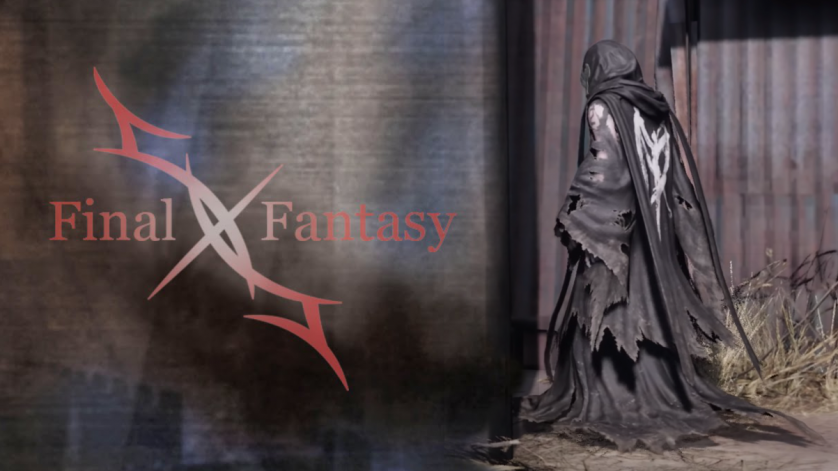

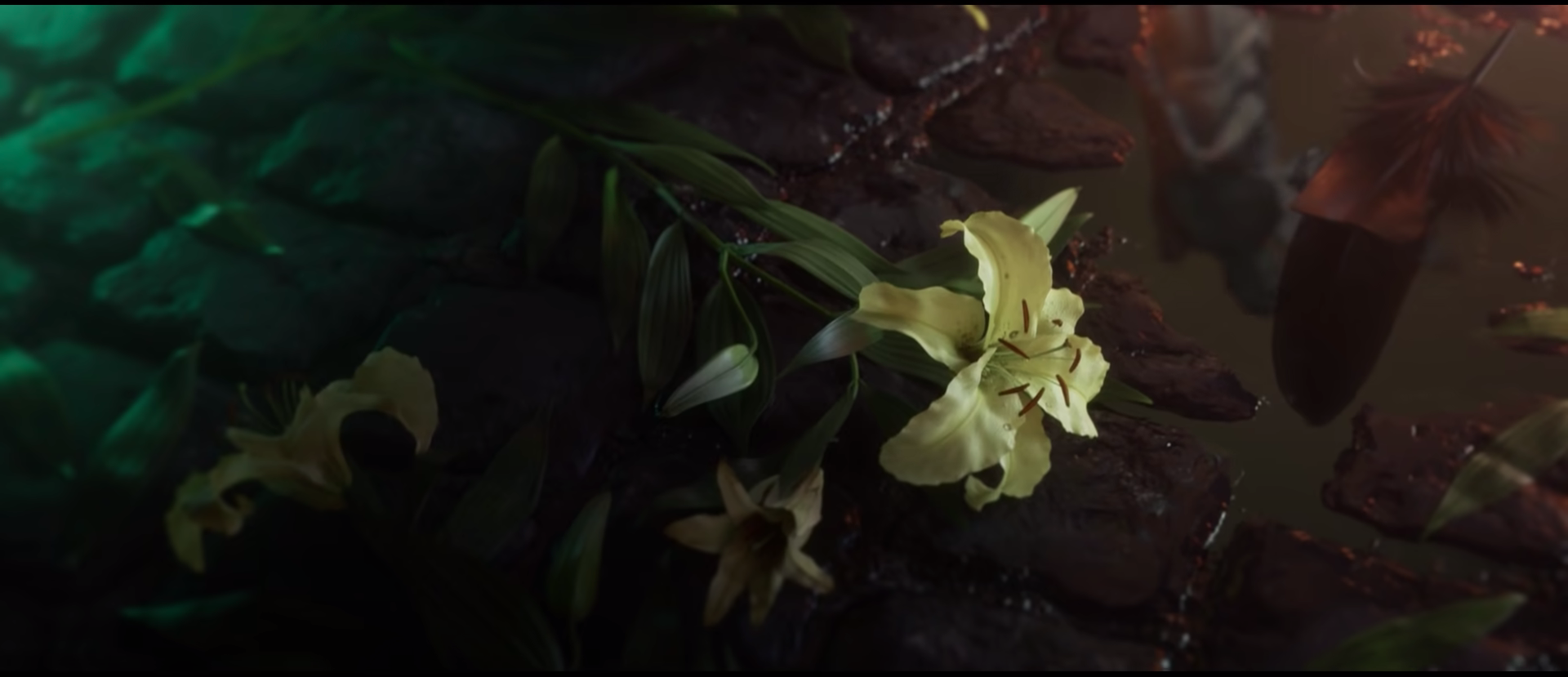
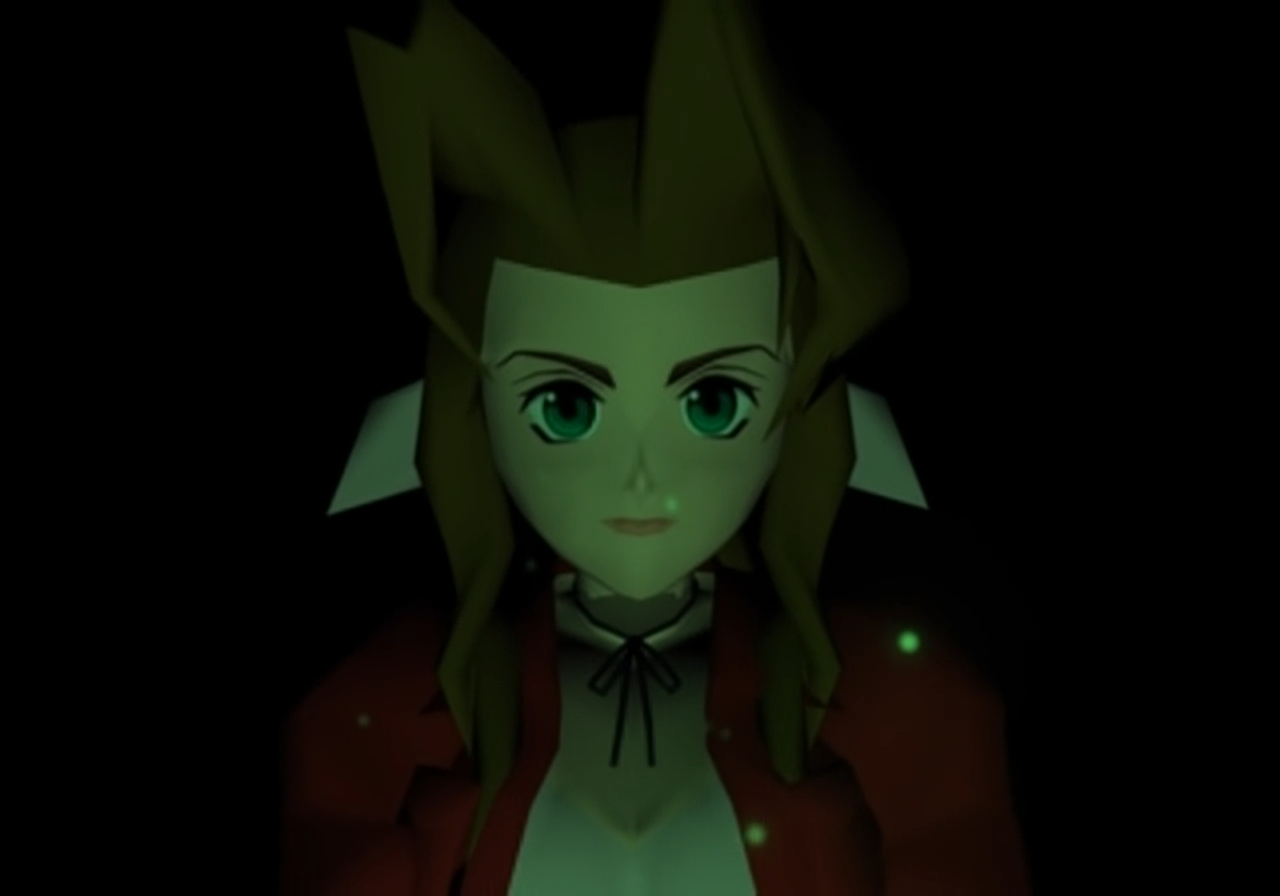
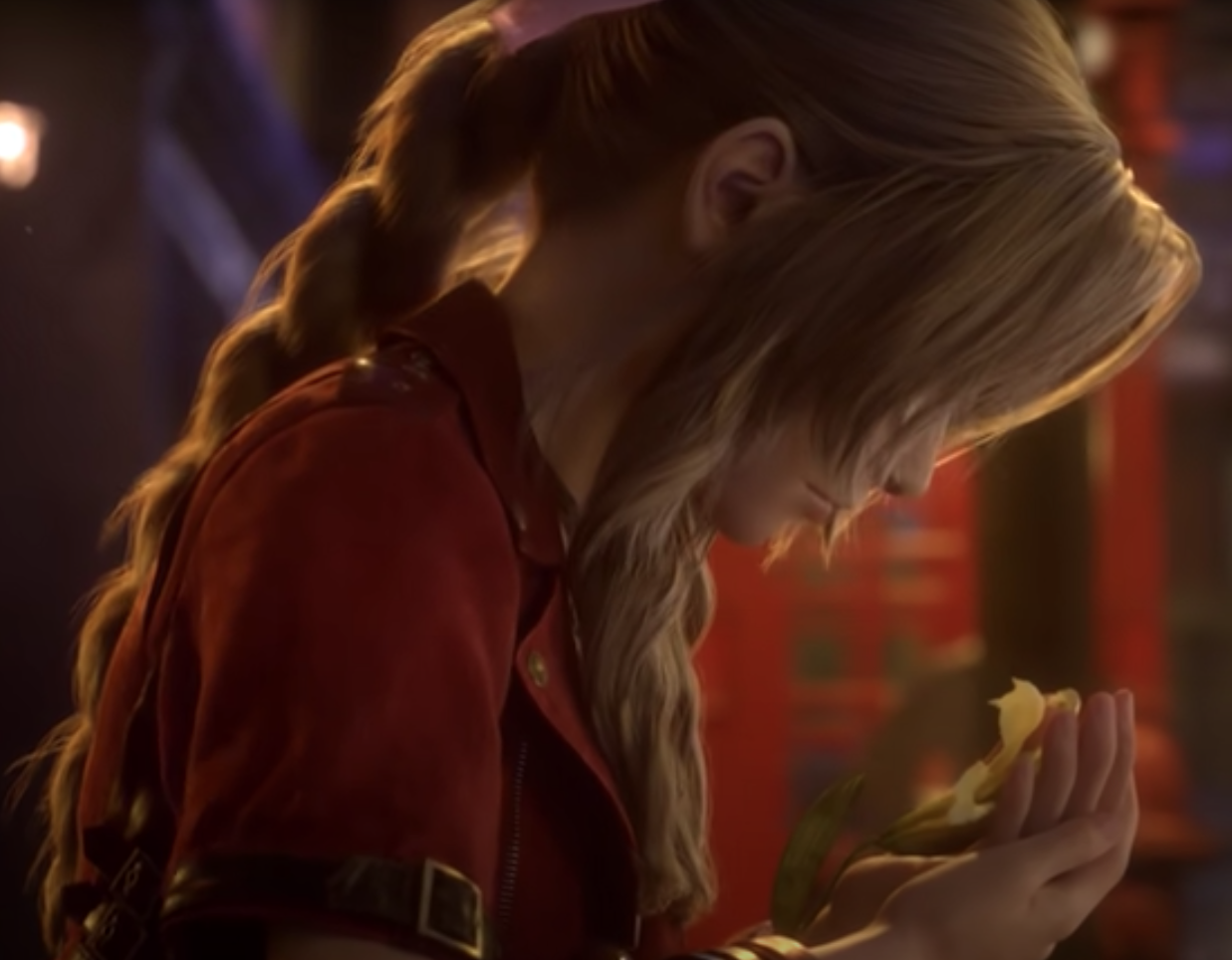
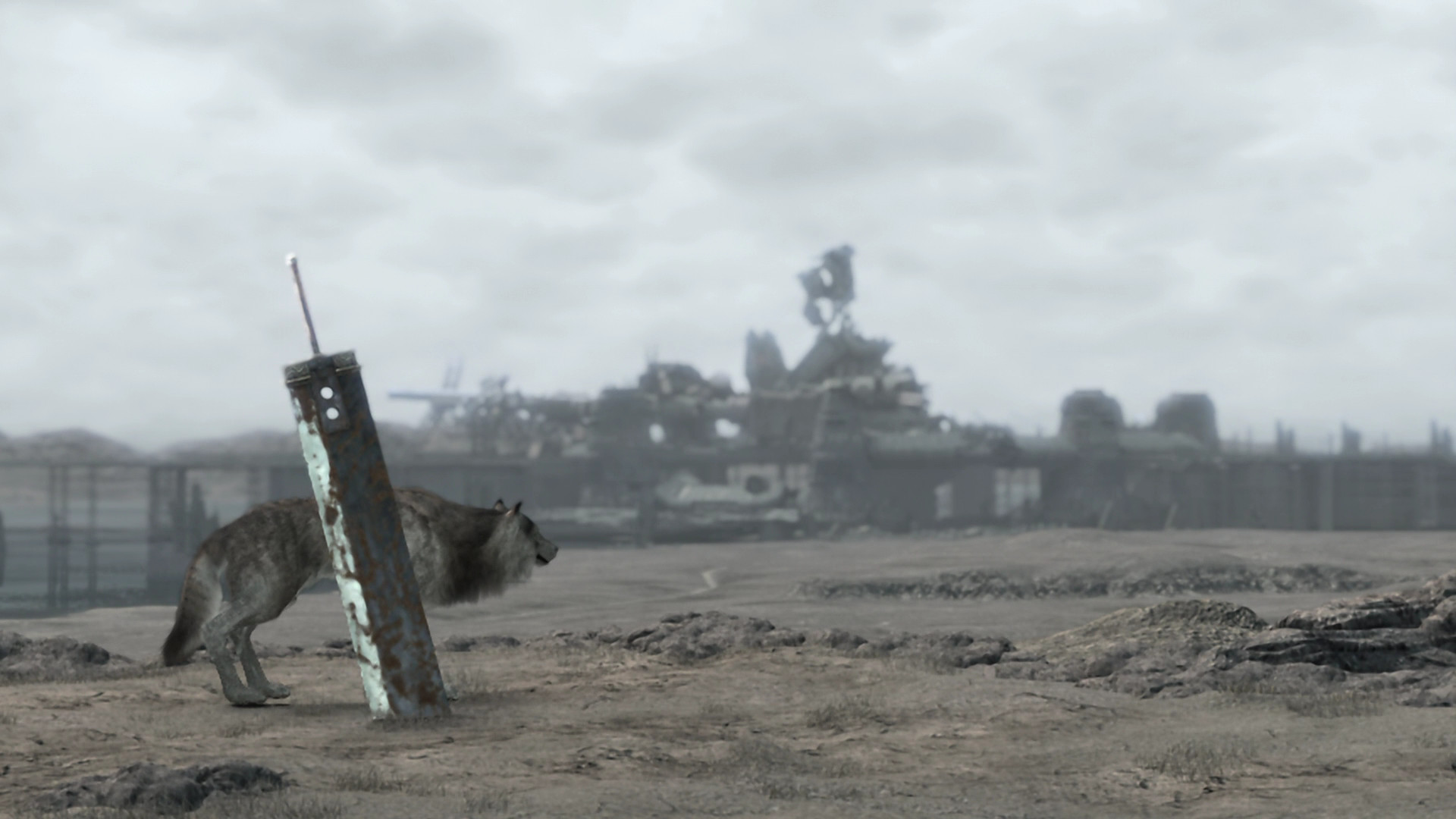

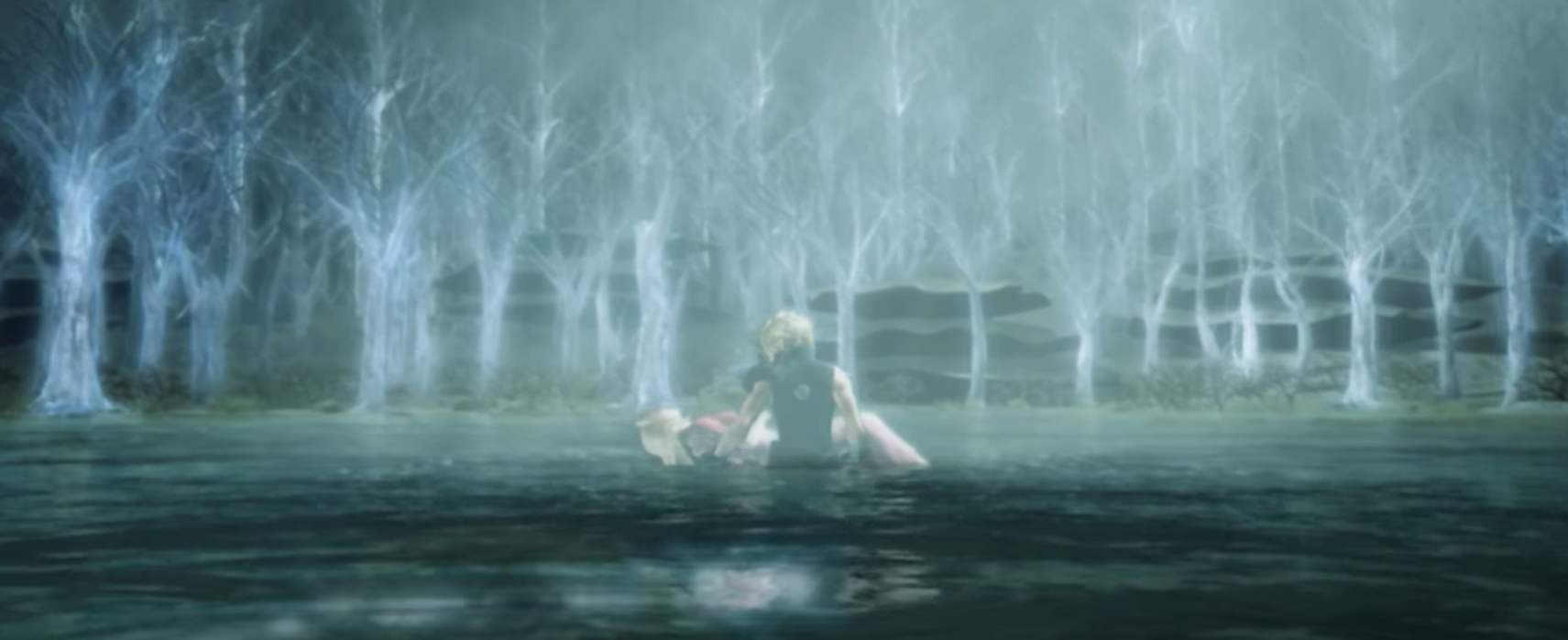
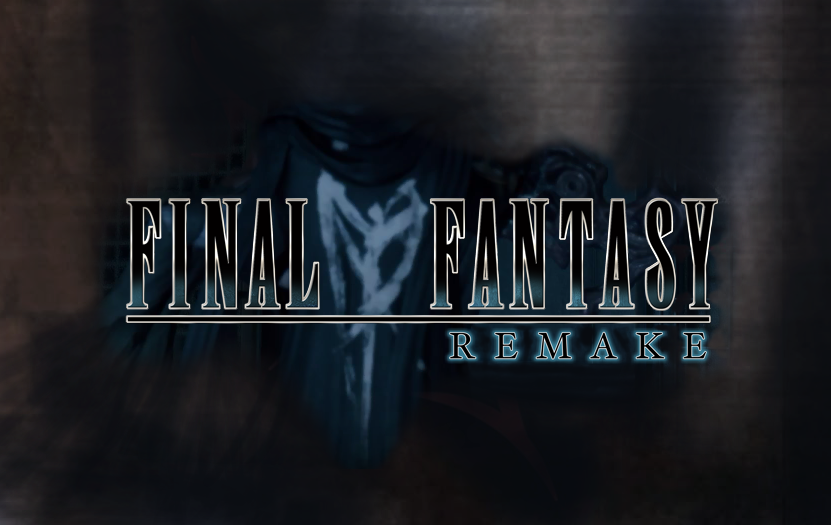
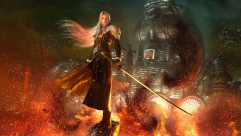
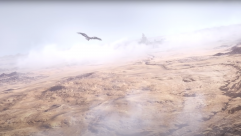
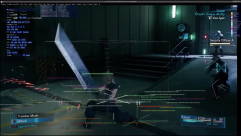

No comments yet
Log in or Register
This is absolutely incredible and I’m sharing it everywhere. Great work X- Soldier.
I’m really glad that you appreciated it, and thanks much for sharing it as well, Schrodingersbabyseal! Hope ya have a good weekend!
Very impressive article as alwyas X-Soldier. Tbh, I still don’t like the whole concept of fate and the meta elements for how overbearing they are. The whispers, specifically, are insanely invasive and not subtle at all. Nonetheless, this was a very interesting read and I especially enjoyed your interpretation of the perspectives of Cloud, Aerith and Sephiroth for the upcoming parts.
Thanks much, X7Strife. Honestly, I felt exactly the same way about them at first, but the more time I’ve spent looking at them, thinking about the original game, and considering what Remake means to the team who’s actually doing it, the more I’ve come to really appreciate what they mean to the story itself. They feel more valuable and less like some slapped on addition to make things new like they did at first.
Fate seems like an odd thing to examine at first, but when you’re talking about life & death… it’s an even more odd thing to ignore. It’s invasive because that’s what it’d be like going back & reliving events you want to change with your whole being, but not being able to. I can’t guarantee that they’ll nail the execution once it’s all said & done, but at this point I feel very confident in what they’re presenting with them & why.
Personally, I’ve found that it’s best not to think of the Whispers as being purely meta concepts – even though they do also serve that purpose in Remake. It helps a lot to view them just like the Planet’s other existing spiritual defense mechanisms like the Weapons & Materia. In the original game they would have been completely invisible to us, since that game just follows the Sefirot’s paths, rather than knowing things about the paths in order to try deviating from them. Everything about what they are matches with the original game in their overt physical presentation, as Final Fantasy VII has never been subtle with the presentation its spiritual concepts once you know what you’re looking at, which is what I wanted to do a lot of in this article.
There’re actually a lot of ways that the Whispers have already been adhering to the in-world mechanics with the the Planet & Shinra’s Science experiments, too. Despite being new and feeling a bit strange, they’re still perfectly aligned with spiritual core of Final Fantasy VII, as well as a lot of the in-game lore as well. I briefly mentioned some of that on Page 7 (in the bit about Stroke II) that I’ve been planning on breaking those things down in a future article, and this is all sort of why I wanted to cover these things first before poking around at some things about the Whispers from a purely in-game-world perspective.
I hope that whenever I get to dive into a bit more detail on them from that perspective that maybe that’ll help ya find them a bit more appealing & less invasive. Either way, I’m glad that you found some things to enjoy from all of this despite not being to hot on the Whispers! Have a good week!
Thank you for this thoroughly researched article!
I’d seen the joke(?) before that David Bowie is in every video game, but this really spells it out as far as Sephiroth. I could never quite get into Bowie’s art rock but now I want to see “The Man Who Fell to Earth”!
I wonder if Seph’s silhouette (fashion-wise) was also inspired by Bowie’s dress + boots for the cover of “The Man Who Sold the World”?
Glad to’ve provided it!
I saw a lot of those while I was doing research, and it was amusing that I was adding yet another example to that list. “The Man Who Fell to Earth” is quite an abstract Sci-Fi film and there’s a ton of nudity in it, but it’s SO very interesting looking at it as something with links to the themes in Final Fantasy VII.
I think that Sakaguchi had some input about Sephiroth’s & Aerith’s designs (they have similar hair because they were initially going to be siblings in the game), but I wouldn’t be too surprised if there were even more Bowie influences than I managed to pick up. 😀
I have to be honest: I did cry in the end.
I’m very sorry for your loss, but knowing that this is what ultimately allowed you to understand more deeply the authors’ intentions and feelings about where they want us to go in the game is inspiring to me. Making us reflect on life, death and our memories, once again, would be the greatest gift they could give us. I really hope you’re right.
It’s amazing what you’ve managed to do. Thank you.
That means a lot to me, so thanks so very much for taking the time to let me know. I did cry several times over the course of doing research & writing this. Additionally, I just learned over the weekend that another friend of mine passed away unexpectedly – and having just written all of this really helped me a lot in processing that, too. I’m working on a semi-companion piece to this one that covers some different but related topics, so I’m hoping it’ll be just as insightful.
Again, thanks for reading through this and letting me know, & I hope that you have a really wondering week!
I haven’t even finished reading this and my mind is already blown. I’ve also been reading the unused dialogues from the OG and man does it give a lot of insight into some of the way remake was done. At least in my opinion. FF7 is my favorite game/story of all time and deep diving into understanding it has been a passion since remake was released. Thank you so much for all this research and concise explanation. I wish i had a friend like you to talk to about all this ff7 passionate stuff, no one around me GETS it.
There was an interview with Kitase in Famitsu that got translated today, and it loosely touched on a couple things I mentioned here in ways that were super satisfying.
I’m glad that you’re enjoying it so far & hope that it carries on with you to the end! I’m slowly working on more, so hopefully that’ll help! It’s a passion that I deeply enjoy, so thanks for taking the time to read & provide extra encouragement for doing this sort of thing!
Hello X-SOLDIER!
I finished the original FF VII a couple of days ago and was really impressed by story, characters and themes of the game and I want to understand more. Unfortunately, I can’t play the Remake right now and I wanted to ask if your whole article has Remake spoilers or I can read some early pages. Or maybe there is some other good article with in-depth analysis of the original game?
Heya literious! I’d very much recommend steering clear of this one for now. There are definitely little bits and pieces of Remake-related information scattered throughout, since the symbol that it’s focused on only appears in Remake.
Really glad that you finished the original though, and you’re more than welcome ta join us on the forums to chat about things there!
In some translations Netzah is pronounced more like Netzach…which would be interesting, since Netzah is broken off from the tree. Remake could be attempting to reestablish his presence.
Just amazing, i’m looking forward for your next analysis!
You bring so much to fans of ffvii like me
thanks and thanks again